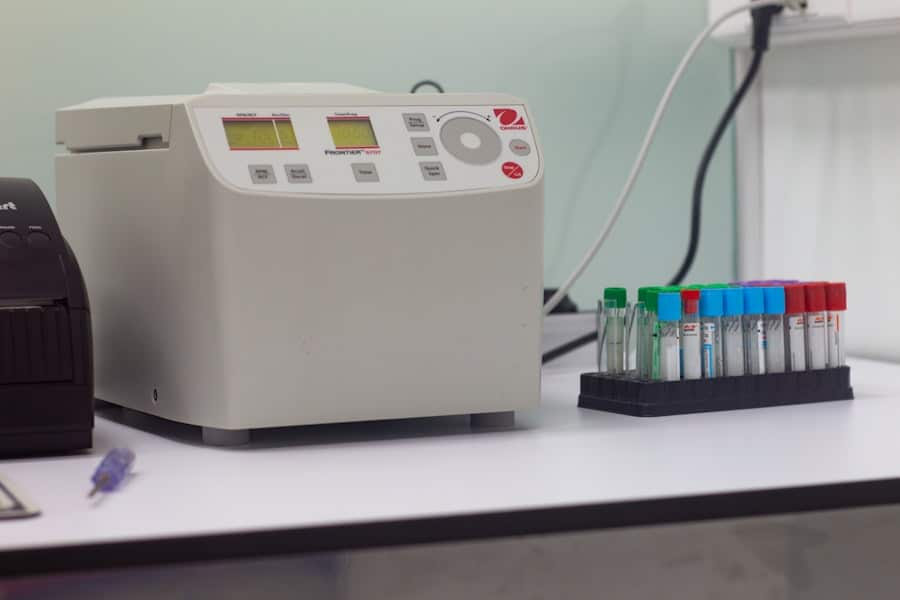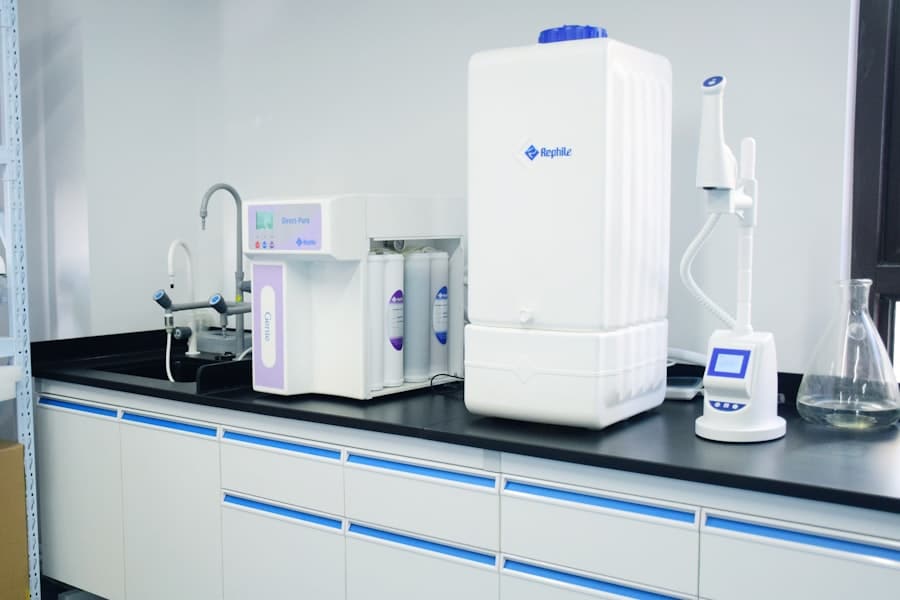Portable labs represent a significant advancement in the field of scientific research and diagnostics, providing a flexible and efficient means of conducting experiments and analyses outside traditional laboratory settings. These mobile units are designed to be compact, self-contained, and equipped with essential tools and technologies that allow for a wide range of applications, from medical diagnostics to environmental testing. The rise of portable labs has been driven by the need for rapid results in various fields, particularly in situations where time is of the essence, such as in emergency medical responses or field research.
Modern portable labs can be outfitted with sophisticated instruments that were once confined to stationary laboratories. This evolution has made it possible for scientists, healthcare professionals, and researchers to gather data and perform analyses in real-time, regardless of their location.
As a result, portable labs are becoming increasingly integral to various sectors, including healthcare, environmental monitoring, and education.
Key Takeaways
- Portable labs offer on-site diagnostic capabilities, enhancing accessibility and convenience.
- They provide rapid results, improving timely decision-making in healthcare.
- Key applications include disease detection, environmental monitoring, and emergency response.
- Advanced technologies like microfluidics and biosensors drive portable lab functionality.
- Despite cost benefits, challenges include technical limitations and the need for user training.
Advantages of Portable Labs
One of the primary advantages of portable labs is their ability to provide immediate access to diagnostic tools and analytical equipment in remote or underserved areas. This accessibility is particularly crucial in regions where traditional laboratory facilities are scarce or non-existent. For instance, during natural disasters or public health emergencies, portable labs can be deployed quickly to assess the situation, conduct tests, and provide timely information that can guide response efforts.
This immediacy can be life-saving, as it allows for rapid identification of diseases or contaminants that may pose a threat to public health. In addition to their accessibility, portable labs offer flexibility in terms of location and usage. They can be set up in various environments, from rural clinics to urban disaster sites, adapting to the specific needs of the situation.
This versatility is further enhanced by advancements in technology that allow for miniaturization of equipment without sacrificing performance. For example, portable PCR machines enable rapid genetic testing in the field, which can be critical for tracking infectious disease outbreaks. The ability to conduct tests on-site reduces the time required for sample transport and processing, ultimately leading to faster decision-making and intervention.
Applications of Portable Labs in Diagnostics

The applications of portable labs in diagnostics are vast and varied, spanning multiple fields such as healthcare, environmental science, and food safety. In healthcare, portable labs have revolutionized the way medical professionals diagnose and treat patients. For instance, during the COVID-19 pandemic, mobile testing units equipped with portable labs became essential for widespread testing efforts.
These units allowed for quick testing in communities, enabling health officials to identify positive cases rapidly and implement necessary public health measures. In environmental science, portable labs are used to monitor air and water quality in real-time. For example, researchers can deploy mobile laboratories to assess pollution levels in rivers or lakes after industrial accidents or natural disasters.
These labs can analyze samples on-site for contaminants such as heavy metals or pathogens, providing immediate data that can inform cleanup efforts and regulatory actions. Similarly, in agriculture, portable labs can test soil and crop samples for nutrient levels or pesticide residues, helping farmers make informed decisions about their practices.
Technology Behind Portable Labs
The technology that underpins portable labs has advanced significantly over the past few years, making them more efficient and user-friendly. Many portable labs now incorporate miniaturized versions of traditional laboratory equipment, such as spectrophotometers, chromatographs, and centrifuges. These devices are designed to maintain high levels of accuracy while being lightweight and energy-efficient.
For instance, handheld spectrometers can analyze chemical compositions without the need for bulky equipment typically found in stationary labs. Moreover, the integration of digital technologies has further enhanced the functionality of portable labs. Many units are equipped with software that allows for real-time data analysis and cloud connectivity.
This capability enables researchers and healthcare professionals to upload results instantly to centralized databases or share findings with colleagues remotely. The use of mobile applications also facilitates data collection and management, streamlining workflows and improving overall efficiency. As a result, the technology behind portable labs not only enhances their analytical capabilities but also fosters collaboration among professionals across different disciplines.
Cost-effectiveness of Portable Labs
Cost-effectiveness is another significant advantage of portable labs that cannot be overlooked. Traditional laboratory setups often require substantial investments in infrastructure, equipment, and personnel. In contrast, portable labs can be deployed at a fraction of the cost while still delivering high-quality results.
This affordability makes them an attractive option for organizations operating on limited budgets or those looking to expand their testing capabilities without incurring excessive expenses. Additionally, the operational costs associated with portable labs tend to be lower than those of fixed laboratories. For example, by conducting tests on-site rather than transporting samples to a central lab, organizations can save on transportation costs and reduce delays associated with sample processing.
Furthermore, the ability to perform multiple tests simultaneously within a portable lab can lead to economies of scale that enhance overall cost efficiency. This financial advantage is particularly beneficial for public health initiatives that require widespread testing but may face budget constraints.
Impact of Portable Labs on Healthcare Access

The impact of portable labs on healthcare access is profound, particularly in underserved communities where access to traditional healthcare facilities may be limited.
For instance, mobile clinics equipped with portable labs can travel to remote areas to offer essential services such as vaccinations, screenings for chronic diseases, and infectious disease testing.
Moreover, the deployment of portable labs has been instrumental in addressing health disparities exacerbated by socioeconomic factors. In many low-income regions, individuals may lack transportation or resources to visit distant healthcare facilities. Portable labs eliminate these barriers by providing services directly within communities.
This approach not only improves access but also fosters trust between healthcare providers and patients by demonstrating a commitment to meeting their needs where they are.
Challenges and Limitations of Portable Labs
Despite their numerous advantages, portable labs also face several challenges and limitations that must be addressed for their continued success and effectiveness. One significant challenge is ensuring the reliability and accuracy of results obtained from portable equipment. While advancements in technology have improved performance, there are still concerns regarding the sensitivity and specificity of certain tests when conducted outside traditional laboratory environments.
Variability in environmental conditions—such as temperature fluctuations or contamination risks—can impact test outcomes. Another limitation is the need for trained personnel to operate portable labs effectively. While many devices are designed to be user-friendly, proper training is essential to ensure accurate results and adherence to safety protocols.
In some cases, a lack of skilled technicians in remote areas may hinder the successful implementation of portable lab initiatives. Additionally, logistical challenges related to transporting equipment and maintaining supplies can complicate operations in field settings.
Future Developments in Portable Lab Technology
Looking ahead, the future developments in portable lab technology promise exciting advancements that could further enhance their capabilities and applications. One area of focus is the integration of artificial intelligence (AI) and machine learning algorithms into diagnostic processes. These technologies could enable more sophisticated data analysis and interpretation, allowing for quicker decision-making based on complex datasets collected in real-time.
Furthermore, advancements in materials science may lead to the development of even more compact and durable lab equipment that can withstand harsh field conditions while maintaining high performance standards. Innovations such as lab-on-a-chip technologies could revolutionize how tests are conducted by miniaturizing entire laboratory processes onto a single chip that requires minimal sample volumes. As global health challenges continue to evolve—such as emerging infectious diseases or environmental crises—the role of portable labs will likely expand further.
Their ability to adapt quickly to changing circumstances makes them invaluable tools for researchers and healthcare providers alike. With ongoing investment in research and development, the future holds great promise for enhancing the effectiveness and reach of portable lab technologies across various sectors.
In exploring the advancements in portable labs and their impact on diagnostics, it’s interesting to consider how technology is reshaping various fields. For instance, the article on best software for tax preparers highlights the importance of streamlined workflows and increased accuracy, which parallels the need for efficiency and precision in portable diagnostic labs. Both innovations aim to enhance productivity and improve outcomes in their respective domains.
FAQs
What are portable labs in the context of diagnostics?
Portable labs are compact, mobile diagnostic units equipped with essential tools and technology to perform medical tests and analyses outside traditional laboratory settings. They enable on-site testing and rapid results.
How do portable labs differ from traditional diagnostic laboratories?
Unlike traditional labs, which are fixed in location and often require samples to be sent off-site, portable labs are designed for mobility and immediate testing. This allows for faster diagnosis and treatment, especially in remote or resource-limited areas.
What types of diagnostic tests can portable labs perform?
Portable labs can conduct a variety of tests including blood analysis, infectious disease detection, genetic testing, and biochemical assays. Advances in technology have expanded their capabilities to include molecular diagnostics and point-of-care testing.
Why are portable labs considered the future of diagnostics?
Portable labs offer rapid, accurate results at the point of care, improving patient outcomes by enabling timely treatment. They increase accessibility to diagnostic services in underserved regions, reduce healthcare costs, and support outbreak management and emergency response.
What technologies enable the functionality of portable labs?
Key technologies include microfluidics, biosensors, lab-on-a-chip devices, and wireless data transmission. These innovations allow miniaturization of complex laboratory processes and integration with digital health platforms.
Are portable labs reliable compared to traditional labs?
Yes, many portable labs use validated technologies that provide accuracy comparable to conventional laboratories. However, the reliability depends on the quality of the device, proper usage, and adherence to testing protocols.
In what settings are portable labs most beneficial?
Portable labs are especially useful in remote or rural healthcare settings, disaster zones, military operations, field research, and during infectious disease outbreaks where rapid diagnostics are critical.
What challenges do portable labs face?
Challenges include ensuring consistent accuracy, managing device maintenance, training personnel, regulatory approvals, and integrating results into existing healthcare systems.
How do portable labs impact patient care?
By delivering quick diagnostic results at the point of care, portable labs enable faster clinical decisions, reduce the need for multiple visits, and improve monitoring of chronic conditions, ultimately enhancing patient care quality.
Are portable labs cost-effective?
Portable labs can reduce costs by minimizing the need for sample transportation, lowering hospital stays, and enabling early disease detection. However, initial investment and device upkeep must be considered in cost analyses.

